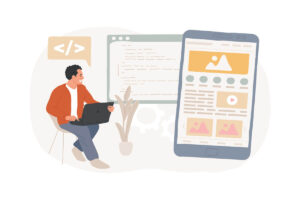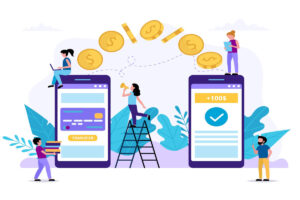In today’s rapidly evolving tech landscape, the composition of an app development team can significantly impact both the creative process and the success of the final product. A diverse team brings a broad spectrum of experiences, perspectives, and skills to the table, leading to enhanced creativity, innovation, and a wider market appeal. This article explores effective strategies for assembling a diverse and inclusive app development team, highlighting the benefits and addressing common challenges in achieving team diversity.
The Benefits of a Diverse Development Team
First and foremost, the diversity of thought and experience in an app development team leads to enhanced creativity and innovation. Different backgrounds mean different approaches to problem-solving, pushing the team beyond conventional strategies and leading to breakthrough ideas. Furthermore, a team that reflects a broader demographic will have a deeper understanding of various market segments, enhancing the app’s appeal and usability across different user groups. Additionally, a diverse team can bring cultural sensitivity and awareness to the development process, ensuring that the app is inclusive and respectful of all users.
A study by McKinsey & Company underscores the significance of diversity in teams, revealing that companies in the top quartile for racial and ethnic diversity are 36% more likely to have financial returns above the respective national industry medians.
This statistic not only highlights the economic advantages of diversity but also underscores its potential to foster innovation and competitiveness in the app development sector.
Challenges in Achieving Team Diversity
Despite the clear benefits, building a diverse team comes with its challenges. Common roadblocks include unconscious bias in recruitment, a lack of diversity in the existing network of team members, and misconceptions about the effort required to foster inclusivity. Overcoming these obstacles starts with acknowledging their existence and implementing proactive measures to mitigate their impact.
One way to combat unconscious bias is by implementing blind hiring practices, where personal information such as name, age, and gender are removed from resumes and applications. This approach shifts the focus towards qualifications and skills rather than demographics. Additionally, expanding recruitment efforts beyond traditional networks can help tap into a wider pool of diverse talent.
Creating an inclusive work culture also plays a crucial role in promoting diversity within a team. This involves actively addressing and challenging any prejudices or stereotypes that may exist among team members and fostering open communication and mutual respect. Providing diversity training for team members can also help promote understanding and empathy towards different backgrounds and perspectives.
Strategies for Hiring Inclusive Talent
To implement these strategies effectively, organizations must be committed to building and sustaining an inclusive environment that values and nurtures diversity at every level. Some key strategies for achieving this include:
Outreach and Recruitment
Expanding your recruitment efforts to reach a diverse pool of candidates is crucial. This can be achieved by partnering with diverse professional organizations, participating in industry events that celebrate diversity, and posting job openings on job boards catering to underrepresented groups in the tech space.
Inclusive Job Descriptions
The language and requirements in your job postings can either attract or deter diverse candidates. Ensure your job descriptions are inclusive, focus on the essential skills needed, and avoid gender-coded words. This approach encourages a broader range of applicants, increasing the diversity of your candidate pool.
Interview and Selection Process
Adopting a structured interview process helps minimize personal biases that might influence hiring decisions. Additionally, involving a diverse interview panel ensures that multiple perspectives are considered in the evaluation of candidates, further supporting fairness and inclusion.
Internship and Mentorship Programs
Developing internship and mentorship programs aimed specifically at underrepresented groups in tech not only provides valuable career opportunities for participants but also helps in building a pipeline of diverse talent for future hiring. These programs also promote a culture of inclusivity and support within the organization.
Diversity Training and Education
Providing diversity training for employees at all levels can foster a better understanding of different cultures, perspectives, and experiences. This knowledge can help create an inclusive work environment where all individuals feel valued and respected.
Fostering an Inclusive Company Culture
Fostering an inclusive company culture is about creating an environment where everyone feels welcome, respected, and valued for their unique contributions. This includes regular training on diversity and inclusion, creating resource groups for underrepresented employees, and ensuring all voices are heard and considered in company decisions. By implementing these practices, companies not only enrich their work environment but also position themselves as attractive to top talent, including those looking to hire iOS app developers, who often prioritize inclusive workplaces.
Building a diverse app development team is just the first step; creating an inclusive environment where all members feel valued and supported is equally important. This includes ongoing training to address biases, promoting open dialogue about diversity and inclusion, and ensuring that company policies reflect a commitment to equality.
Measuring Success and Continuous Improvement
Measuring the success of diversity and inclusion initiatives involves setting clear benchmarks and regularly assessing the composition and satisfaction of the app development team. Surveys, feedback sessions, and retention rates can provide invaluable insights into how effectively a company is nurturing an inclusive culture. Continuous improvement should be the goal, with insights used to refine strategies and practices over time, ensuring the app development team remains vibrant, diverse, and innovative.
To gauge the effectiveness of diversity and inclusion efforts, it’s vital to set clear goals and benchmarks. Regular assessment of these metrics allows for identifying areas for improvement and adjusting strategies accordingly. Celebrating successes, no matter how small fosters a culture of continuous improvement and commitment to inclusivity.
Conclusion
The advantages of having a diverse app development team are undeniable, ranging from increased innovation to broader market reach. However, achieving this diversity requires a conscious effort in all aspects of recruitment and company culture. Stakeholders at every level must commit to fostering an environment that not only attracts but also supports and retains diverse talent. The future of tech depends on our ability to innovate, and that innovation starts with building teams that reflect the rich diversity of our global user base. Contact us today to learn more about how we can help your company become a leader in diversity and inclusion.











+ There are no comments
Add yours